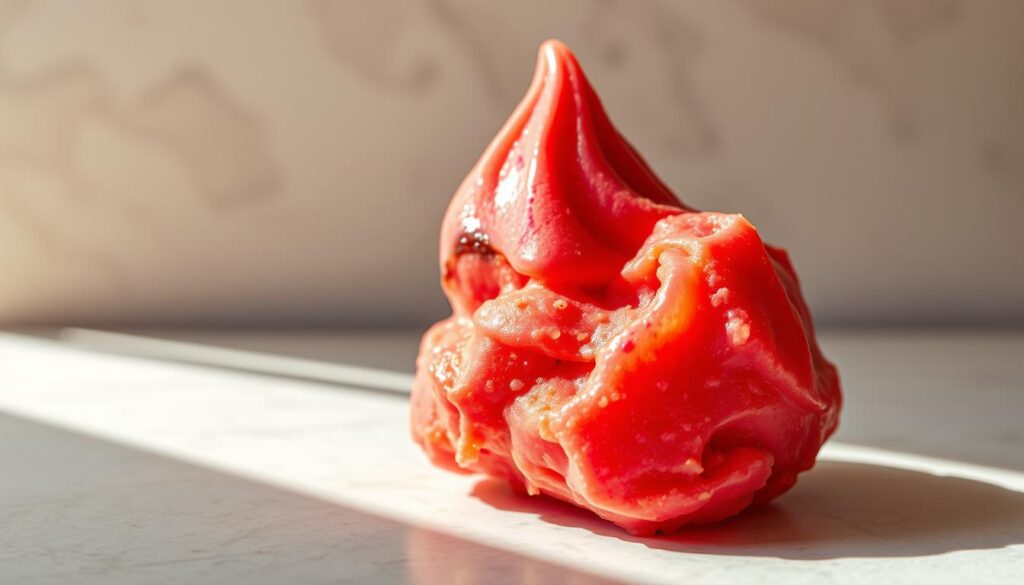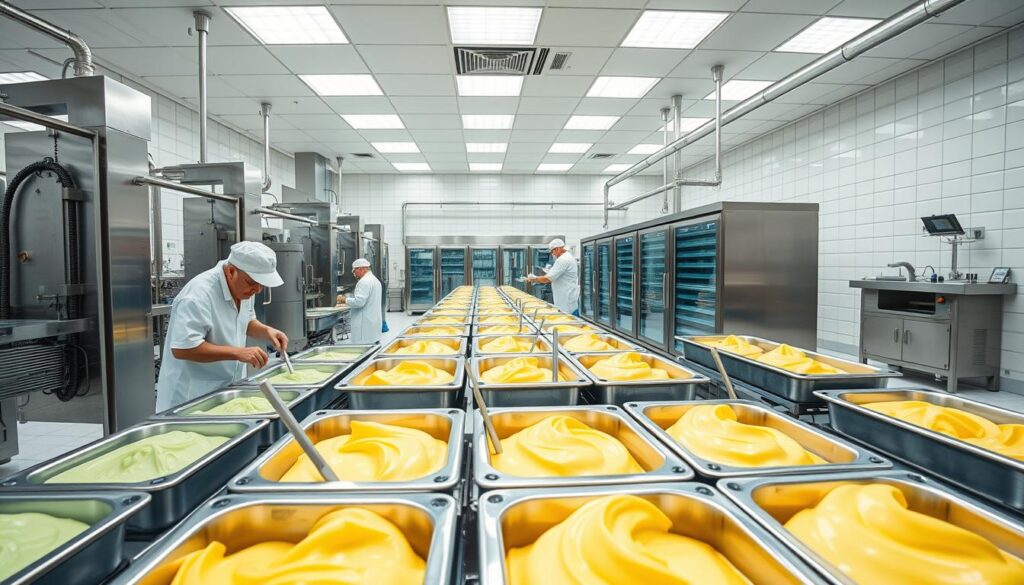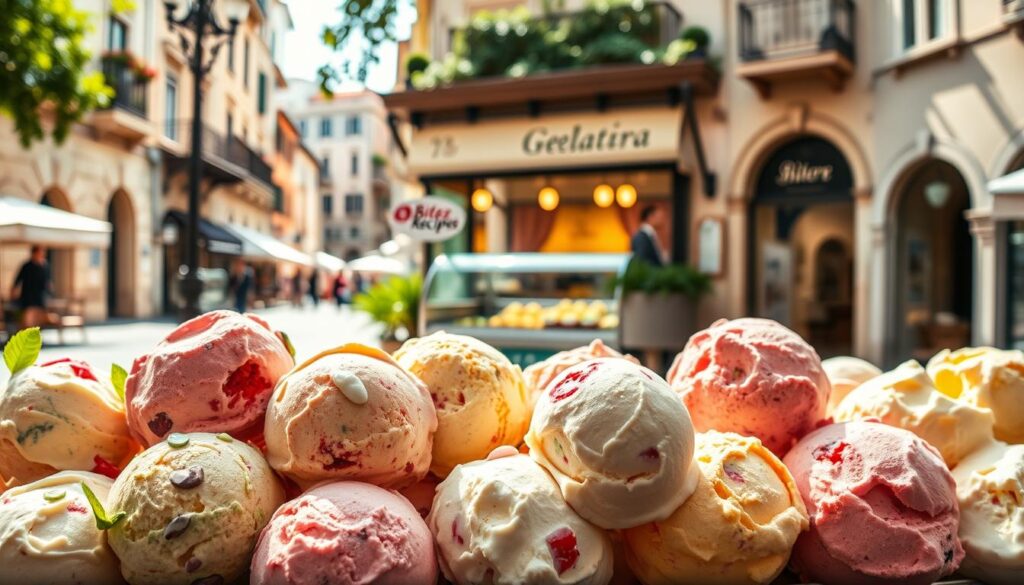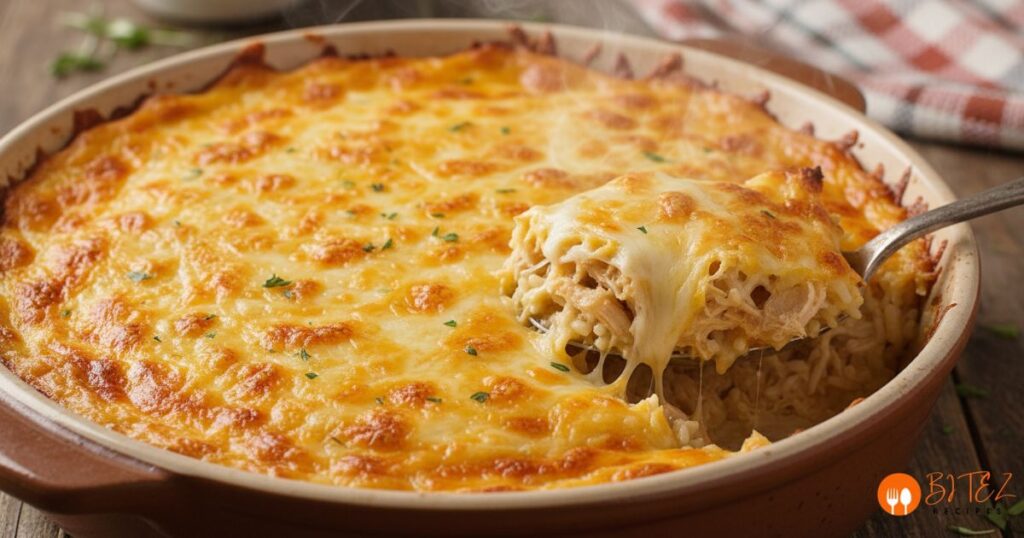Exploring frozen desserts, I ponder the gelato vs ice cream divide. What distinguishes Italian gelato from traditional ice cream? This article will dissect their unique traits, including gelato’s benefits and ice cream’s differences. We’ll dive into gelato recipes and ice cream flavors, uncovering what makes them unique.

Understanding gelato and ice cream’s differences enhances our appreciation for these treats. Whether you prefer creamy ice cream or denser gelato, knowing the distinctions can elevate your enjoyment. This article will cover the main differences, including gelato recipes and ice cream flavors, guiding you in choosing which to savor.
Key Takeaways
- Gelato and ice cream have distinct differences in terms of ingredients and texture
- Italian gelato is known for its denser, creamier texture compared to ice cream
- Gelato benefits include a lower fat content compared to traditional ice cream
- Ice cream differences include a wider range of flavors and a lighter texture
- Understanding gelato recipe and ice cream flavors can help you appreciate the craftsmanship behind these frozen treats
- Gelato vs ice cream is a matter of personal preference, with each having its unique characteristics and advantages
The Origins of Frozen Desserts
Frozen desserts have a rich and varied history, shaped by cultures worldwide. The gelato history is fascinating, tracing back to ancient Italy. Ice cream origins also have ancient roots, with people mixing snow and sweetened milk for a frozen delight.
The journey of frozen desserts is long and complex. The early days of gelato vs ice cream history reveal distinct differences. Understanding these differences requires delving into the ancient history of ice cream and the emergence of Italian gelato.
Ancient Ice Cream History
Greeks and Romans enjoyed frozen treats long ago. They combined snow and sweetened milk, setting the stage for today’s ice cream origins.
Birth of Italian Gelato
Italian gelato’s history is deeply rooted in the Renaissance. The gelato history is characterized by fresh ingredients and traditional methods, passed down through generations.
Evolution to Modern Frozen Treats
Today, we enjoy a variety of frozen desserts, each with its own flair. The gelato vs ice cream history has grown, with innovators exploring new flavors and techniques.
What Makes Gelato Different from Ice Cream
The debate between gelato vs ice cream goes beyond taste. A key difference is the ingredients used. Gelato contains more milk and less cream, leading to a denser, creamier texture. In contrast, ice cream has more cream, making it richer but also heavier.
The churning process is another critical factor. Gelato is churned slowly, introducing less air and preserving natural flavors. This results in a more intense taste. Ice cream, churned faster, has a lighter, fluffier texture due to more air incorporation.
Understanding these differences aids in making informed choices between gelato and ice cream. Whether you prefer gelato’s dense texture or ice cream’s airy feel, knowing their unique characteristics enhances your enjoyment. Recognizing the distinct gelato ingredients and ice cream differences allows for a deeper appreciation of these frozen delights.
Core Ingredients: A Detailed Comparison
Exploring gelato vs ice cream ingredients reveals distinct differences. While both may seem similar, the ingredients’ proportions and types significantly influence the final product’s texture, taste, and nutritional profile.
Traditional Ice Cream Base Components
Ice cream typically consists of cream, sugar, and eggs. Its higher fat content makes it richer and creamier. Yet, this also contributes to a higher calorie count.
Authentic Gelato Ingredients
Gelato, in contrast, often includes milk, sugar, and flavorings like fruit or nuts. Its lower fat content makes it a preferred choice for those seeking a lighter dessert option.
Here are some key differences between gelato vs ice cream ingredients:
- Gelato: milk, sugar, flavorings
- Ice cream: cream, sugar, eggs
Role of Fat Content
The fat content in gelato and ice cream impacts their texture and taste. Gelato’s lower fat content results in a denser, icier texture. Ice cream, with its higher fat content, is creamier and richer. Recognizing the role of fat content helps in choosing between these desserts.
The Science Behind Churning Methods
Gelato and ice cream churning processes differ, impacting their texture and consistency. The churning methods for gelato and ice cream are distinct, leading to unique qualities in each dessert. This topic fascinates many who enjoy frozen treats.
Gelato churning is slower and gentler, introducing less air. This makes gelato denser and creamier. In contrast, ice cream churning is faster and more vigorous, adding more air. This results in a lighter, fluffier texture.
Some key differences in churning methods include:
- Temperature: Gelato is churned at a lower temperature than ice cream.
- Agitation: Gelato is churned with a slower and more gentle agitation, while ice cream is churned with a faster and more vigorous agitation.
- Air content: Gelato has less air content than ice cream, resulting in a denser texture.

In conclusion, the science behind churning methods is vital for understanding gelato and ice cream’s textures and consistencies. By grasping the differences in churning methods, we can better appreciate each dessert’s unique qualities. This knowledge enhances our enjoyment of these frozen delights.
| Churning Method | Temperature | Agitation | Air Content |
|---|---|---|---|
| Gelato Churning | Lower | Slower and more gentle | Less |
| Ice Cream Churning | Higher | Faster and more vigorous | More |
Temperature Matters: Serving and Storage Differences
Temperature plays a significant role in the enjoyment of gelato and ice cream. The right serving temperature and storage conditions are essential for preserving their texture and flavor. We will discuss the optimal gelato serving temperature, ice cream storage needs, and how temperature affects their taste and texture.
Optimal Gelato Serving Temperature
The perfect gelato serving temperature ranges from 15°F to 18°F (-9°C to -8°C). This range helps maintain its creamy texture and rich flavors. In contrast, ice cream is best served at a colder 0°F (-18°C).
Ice Cream Storage Requirements
Proper ice cream storage is vital. It should be kept at a consistent 0°F (-18°C) to avoid ice crystal formation and keep it smooth. Gelato, while slightly warmer, can be stored around 10°F (-12°C).
Impact on Texture and Taste
The serving and storage temperatures greatly influence gelato and ice cream’s texture and taste. Serving gelato too cold can make it icy and lose its creaminess. Storing ice cream too warm can soften it and alter its shape. Understanding these temperature nuances helps us enjoy gelato vs ice cream and ice cream at their peak.
| Dessert | Serving Temperature | Storage Temperature |
|---|---|---|
| Gelato | 15°F – 18°F (-9°C – -8°C) | 10°F (-12°C) |
| Ice Cream | 0°F (-18°C) | 0°F (-18°C) |
Texture and Consistency Variations
The texture of gelato and ice cream differs significantly. gelato vs ice cream is denser and creamier, while ice cream is lighter and airier. This disparity stems from the distinct ingredients and churning processes. Gelato, with its higher milk content and less air, boasts a smoother texture. In contrast, ice cream’s richer cream and air content yield a fluffier texture.
Ingredients also play a role in these texture differences. gelato vs ice cream frequently incorporates more fruit and nut purees, influencing its texture. Ice cream, on the other hand, often includes chocolate chips or nuts. The churning pace affects the final texture. Gelato’s slower churn introduces less air, making it denser. Ice cream’s faster churn, conversely, incorporates more air, making it lighter.
- Density: Gelato is denser than ice cream
- Air content: Ice cream has more air than gelato
- Ingredients: Gelato often includes more fruit and nut purees, while ice cream may include more mix-ins
These texture and consistency differences impact the dessert’s taste and enjoyment. Recognizing these factors helps you choose the right dessert for your preference.
Air Content and Density Differences
The main difference between gelato and ice cream lies in their air content and density. Gelato has a higher density, meaning it contains less air. This results in a richer, more intense flavor experience.
Ice cream, on the other hand, has a higher air content due to the churning process. This introduces more air into the mixture. Understanding overrun in ice cream is crucial to appreciating the differences between gelato and ice cream.
Understanding Overrun in Ice Cream
Overrun refers to the amount of air incorporated into ice cream during churning. It affects the texture and consistency of the final product. Ice cream with high overrun is lighter and more airy, while low overrun results in a denser, creamier texture.
Gelato’s Dense Nature
Gelato’s dense nature is due to its lower air content. This is achieved through a slower churning process, which introduces less air. The result is a richer, more intense flavor experience characteristic of gelato. The gelato vs ice cream density difference is a key factor in determining the overall taste and texture of these frozen desserts.
Here is a comparison of gelato and ice cream in terms of their air content and density:
| Frozen Dessert | Air Content | Density |
|---|---|---|
| Gelato | Lower | Higher |
| Ice Cream | Higher | Lower |
Flavor Intensity and Expression
The contrast between gelato and ice cream flavors is striking, with gelato vs ice cream boasting a more intense taste. This is due to its higher ingredient concentration and lower air content. As a result, gelato offers a richer and more robust flavor experience.
On the other hand, ice cream’s flavor can be less pronounced because of the air incorporated during churning. Yet, this doesn’t diminish its appeal. Flavors like vanilla and chocolate are beloved for their creamy texture and sweetness.
Why Gelato Tastes More Intense
Gelato’s dense nature and lower water content are key to its intense flavor. The slower churning process also helps preserve the natural flavors of the ingredients. This results in a more authentic taste experience.
Popular Flavor Variations
Both gelato and ice cream boast a wide array of flavors, ranging from classic to unique. Gelato favorites include hazelnut, pistachio, and stracciatella. Ice cream enthusiasts often go for cookies and cream, mint chocolate chip, and rocky road.
Here is a comparison of popular gelato and ice cream flavors:
| Gelato Flavor | Ice Cream Flavor |
|---|---|
| Hazelnut | Cookies and Cream |
| Pistachio | Mint Chocolate Chip |
| Stracciatella | Rocky Road |

Nutritional Comparison: Calories and Fat
The debate between gelato nutrition and ice cream nutrition often centers on calories and fat. Both are indulgent treats, yet their nutritional profiles differ. This disparity stems from the distinct ingredients and production techniques employed for each.
Gelato vs ice cream nutrition reveals gelato generally has less fat content because it contains more milk than cream. This leads to gelato having fewer calories than traditional ice cream. Yet, the gelato nutrition facts can fluctuate based on flavors and mix-ins, which can significantly boost calorie counts.
| Dessert | Calories (per serving) | Fat Content (per serving) |
|---|---|---|
| Gelato | 150-200 | 3-5g |
| Ice Cream | 200-300 | 10-15g |
Grasping the gelato vs ice cream nutrition facts empowers consumers to make better dessert choices. Whether you lean towards ice cream’s richer flavor or gelato’s denser, more complex taste, knowing the calories and fat content aids in balancing indulgence.
Artisanal vs Commercial Production
The production methods of gelato and ice cream significantly influence the final product. Artisanal gelato employs traditional techniques, emphasizing quality ingredients and meticulous craftsmanship. In contrast, commercial ice cream is mass-produced using modern manufacturing techniques.
The distinction between artisanal gelato and commercial ice cream lies in their ingredients and production methods. Artisanal gelato is made in small-batch production, ensuring each batch’s flavor and texture are perfect. Commercial ice cream, on the other hand, is produced on a large scale, resulting in a less personalized product.
Traditional Gelato Making
Traditional gelato making is a labor-intensive process. Each batch is crafted with care to achieve the best flavor and texture. This involves:
- Using high-quality, natural ingredients
- Slowly churning the mixture to incorporate air and develop the desired texture
- Aging the mixture to allow the flavors to mature
Modern Ice Cream Manufacturing
Modern ice cream manufacturing, in contrast, focuses on efficiency and consistency. It involves:

Automated machinery mixes and churns the ingredients, then freezes the mixture to create the final product. This method produces consistent results but often lacks the unique character and flavor of artisanal gelato. The choice between artisanal gelato and commercial ice cream depends on personal preference. Gelato production offers a traditional and nuanced experience, while ice cream production provides a convenient and widely available option.
Serving Styles and Presentation
Presentation is key in both gelato vs ice cream and ice cream serving. The way each dessert is presented can greatly impact its enjoyment. Gelato and ice cream serving styles differ significantly in this aspect.
Gelato is often served with a focus on simplicity and elegance. Traditional Italian-style dishes and utensils are commonly used. In contrast, ice cream is often served with elaborate toppings and mix-ins. The presentation of ice cream is as important as its taste, with shops competing to create stunning sundaes and milkshakes.
Some popular gelato serving styles include:
- Serving gelato in traditional Italian-style cups or cones
- Offering a variety of toppings, such as nuts, fruit, and chocolate
- Creating intricate designs and patterns on top of the gelato
The presentation of gelato vs ice cream and ice cream significantly influences customer perception. A well-presented dessert can enhance the overall experience, making it more enjoyable and memorable.
The presentation of gelato and ice cream is crucial. By focusing on simple, elegant styles and creative presentation, shops can elevate their products. This creates a lasting impression on customers.
| Gelato Serving Style | Ice Cream Serving Style |
|---|---|
| Traditional Italian-style cups or cones | Colorful sundaes and milkshakes |
| Toppings, such as nuts and fruit | Elaborate toppings and mix-ins |
Health Considerations and Dietary Impact
Exploring gelato vs ice cream health and ice cream health reveals several key factors. Sugar content is a major concern, as both can be high. Yet, gelato generally has less sugar than ice cream.
Dairy sensitivity is another critical aspect. Many face challenges due to dairy intolerance, making it hard to enjoy these treats. Fortunately, dairy-free options are abundant, allowing everyone to savor these delights.
Portion control is essential for maintaining a healthy diet. It’s easy to overindulge, but this can harm our health. By controlling portions and monitoring sugar intake, we can enjoy these treats responsibly.
Here are some tips for healthier gelato vs ice cream and ice cream choices:
- Choose gelato or ice cream with lower sugar content
- Opt for dairy-free alternatives if you suffer from dairy sensitivity
- Practice portion control to avoid overindulging

By being mindful of these factors and making informed choices, we can indulge in gelato and ice cream while keeping our diet and lifestyle healthy.
| Gelato | Ice Cream |
|---|---|
| Lower sugar content | Higher sugar content |
| Dairy-free alternatives available | Dairy-free alternatives available |
| Higher density, making it more filling | Lower density, making it easier to overindulge |
Regional Variations and Cultural Significance
Gelato and ice cream exhibit regional differences that mirror the distinct cultural and culinary heritages of different areas. In Italy, gelato is a beloved dessert, with gelato regional variations that highlight local tastes and ingredients. The northern regions are famous for their creamy hazelnut gelato, contrasting with the southern regions’ preference for lighter, fruitier flavors.
On the other hand, the ice cream cultural significance varies significantly across countries. In the United States, ice cream is a beloved summer treat, often enjoyed outdoors. In Japan, ice cream is a favorite dessert, with unique flavors like matcha and sesame. The gelato vs ice cream cultural significance is also noteworthy, with gelato viewed as a more artisanal and traditional option, while ice cream is seen as a more commercial treat.
Some notable regional differences in gelato and ice cream include:
- Gelato in Italy: known for its rich, creamy texture and traditional flavors such as hazelnut and pistachio
- Ice cream in the United States: popular flavors include vanilla, chocolate, and strawberry, with a focus on mix-ins and toppings
- Gelato in Japan: unique flavors such as matcha and sesame are popular, with a focus on high-quality, artisanal ingredients
In conclusion, the gelato regional variations and ice cream cultural significance reflect the diverse cultural and culinary traditions worldwide. By understanding and appreciating these differences, we can gain a deeper appreciation for the unique characteristics of each dessert and their roles in their respective cultures.
Making the Right Choice: When to Choose Each
The gelato vs ice cream debate hinges on the occasion and personal taste. Gelato is ideal for warm weather, outdoor gatherings, or as a post-meal indulgence. In contrast, ice cream is perfect for cozying up on a cold winter night or celebrating a special event.
When deciding between gelato and ice cream, think about the texture and flavor you crave. Gelato boasts a dense, creamy texture and bold flavors. Ice cream, on the other hand, is lighter and offers a broader spectrum of tastes. For a refreshing, fruity option, gelato might be the better pick. But if you’re after a rich, comforting dessert, ice cream is the way to go.
Consider these factors when choosing between gelato and ice cream:
- Occasion: Gelato suits outdoor events, while ice cream is better for indoor gatherings.
- Texture: Gelato is dense and creamy, while ice cream is lighter and more airy.
- Flavor: Gelato offers intense, fruity flavors, while ice cream has a wider variety, including rich and comforting options.
The final decision between gelato and ice cream depends on your personal preference and the occasion. By weighing these factors, you can choose the perfect frozen treat for your needs.
| Gelato | Ice Cream |
|---|---|
| Dense, creamy texture | Lighter, more airy texture |
| Intense, fruity flavors | Wide range of flavors, including rich and comforting options |
Conclusion
The differences between gelato and ice cream are significant, affecting their taste, texture, and fat content. Gelato has a richer flavor, a denser texture, and often less fat than ice cream. This makes gelato a standout in the world of frozen desserts, offering a unique culinary experience.
When deciding between gelato and ice cream, it’s all about what you’re in the mood for. Gelato is perfect for those seeking intense flavors, while ice cream is ideal for a creamy treat. Both are beloved for their ability to bring joy and satisfaction to our lives.
Next time you’re torn between gelato and ice cream, consider their distinct qualities. Enjoy the unique pleasures they offer, whether it’s a scoop of gelato or a serving of ice cream. The truth is, there’s no wrong choice. Each frozen delight is perfect for its own special moments.
FAQ
What is the main difference between gelato and ice cream?
Gelato and ice cream differ in their production methods. Gelato has less fat, is churned slower, and served warmer than ice cream.
Is gelato healthier than ice cream?
Gelato is often seen as a healthier choice than ice cream. It has less fat, less air, and sometimes less sugar.
What is the texture of gelato compared to ice cream?
Gelato’s texture is denser, creamier, and smoother than ice cream. This is due to slower churning and less air.
How do the flavors of gelato and ice cream differ?
Gelato’s flavors are more intense and concentrated than ice cream’s. This is because gelato has less fat and air, enhancing the taste.
What is the serving temperature for gelato and ice cream?
Gelato is served at 15-20°F, while ice cream is served at 0-10°F. This temperature difference impacts their texture and feel.
How do the ingredients in gelato and ice cream differ?
Gelato uses more milk and less cream than ice cream. It also has fewer egg yolks and sugars.
What is the origin of gelato?
Gelato originated in Italy in the 16th century, created by Bernardo Buontalenti. It’s deeply rooted in Italian culture and cuisine.
How does the churning process differ between gelato and ice cream?
Gelato churns slower and incorporates less air than ice cream. This makes gelato denser and creamier.
What are some popular gelato flavors?
Popular gelato flavors include pistachio, stracciatella, hazelnut, coffee, and fruit flavors like lemon and strawberry.
Can I make gelato at home?
Yes, making gelato at home is possible with the right tools and ingredients. You’ll need a gelato maker, whole milk, cream, sugar, and flavorings.








